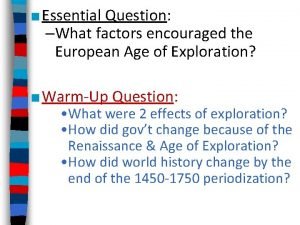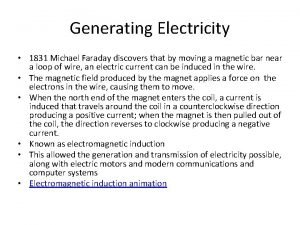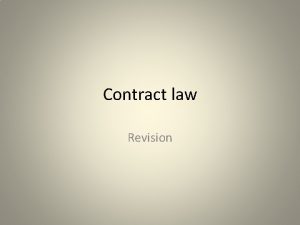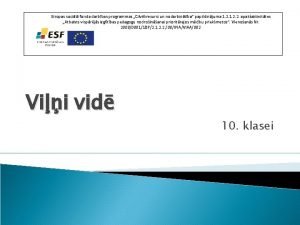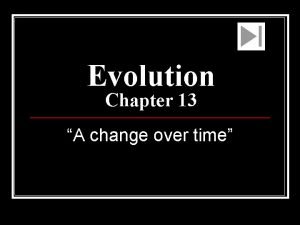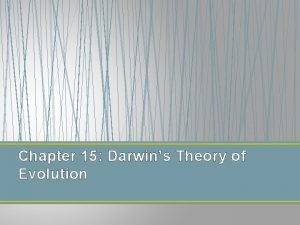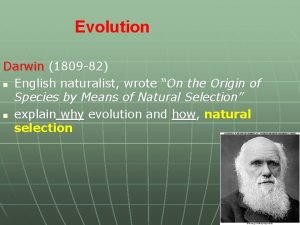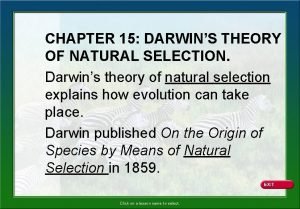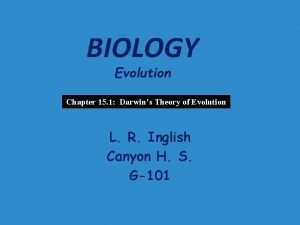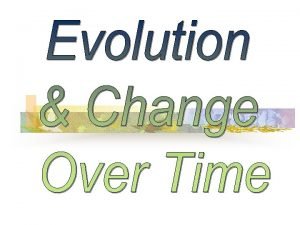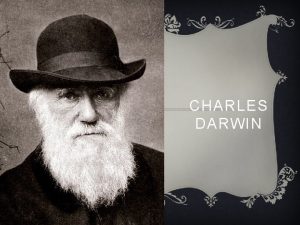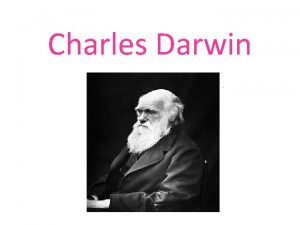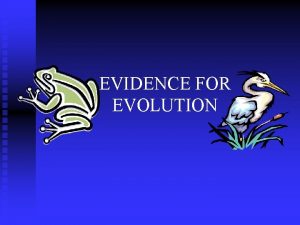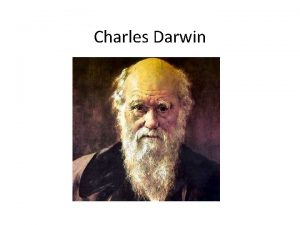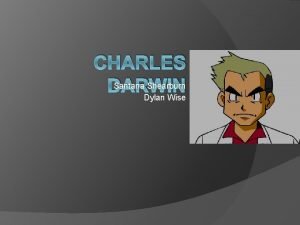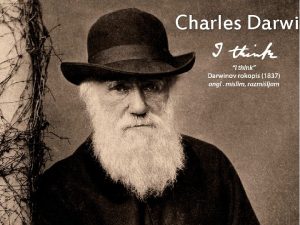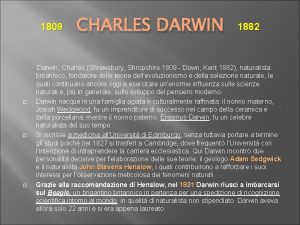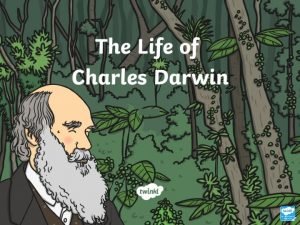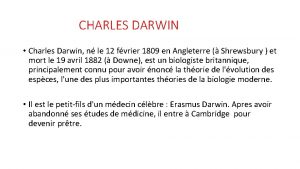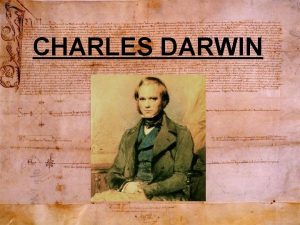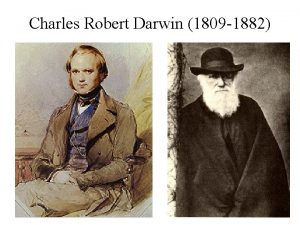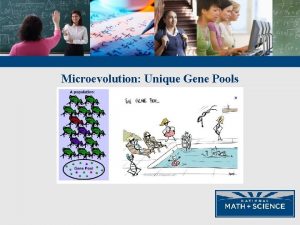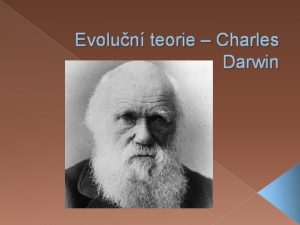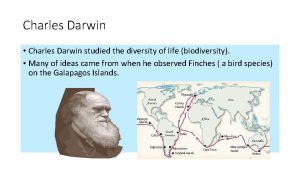Evolution Charles Darwin In 1831 Darwin set sail


















- Slides: 18

Evolution!

Charles Darwin • In 1831, Darwin set sail for a voyage around the world. • Makes hundreds of observations and collects evidence. • Comes up with hypothesis about the way life changes over time: Evolution.

Darwin’s Observations • Plants and animals are well suited to wherever they live. • Similar habitats separated by oceans had very different animals. • Collected fossils (preserved animal remains) that looked like living creatures. • Galapagos Islands.


Evidence of Evolution #1: Natural Selection • Survival of the fittest: Strongest and best survive. • Organisms compete for resources. • Key factor is how well organism is suited for its environment: Like having fur or a beak that can crush seeds. • Fur would be an adaptation, which is an inherited characteristic that increases a organisms chance for survival.

• The birds look the same, but have different beaks. Why?

• What adaptations make this polar best suited to her environment?

Evidence of Evolution #2: Fossil Record • Fossils are remains of ancient life. • Different layers of rock formed at different times during Earth’s history. • By comparing older fossils to newer fossils, gradual change over time can be seen.



Evidence of Evolution #3: Geographic Distribution • Similar animals in different locations. • Came from common ancestor.


Evidence of Evolution #4: Homologous Body Structures • Structures that have different mature (fully grown) forms but develop from the same embryonic tissues are said to be Homologous Body Structures.



Evidence of Evolution #5: Similarities in Embryology • Early stages, or embryos, of many animals with backbones are similar.


Terminology • Natural Selection – Nature picks who lives and who dies. The strongest or most fit survive. • Artificial Selection – We pick who survives. • Adaptation – Inherited characteristic that increased chance for survival.
 Explain the theory of evolution
Explain the theory of evolution Europeans set sail
Europeans set sail What factors most inspired conquistadors to set sail?
What factors most inspired conquistadors to set sail? Total set awareness set consideration set
Total set awareness set consideration set Training set validation set test set
Training set validation set test set Hegel 1770 a 1831
Hegel 1770 a 1831 Vācu ķīmiķis 1829-1896
Vācu ķīmiķis 1829-1896 1831 faraday
1831 faraday Chappel v nestle
Chappel v nestle Angļu fiziķis 1831-1879
Angļu fiziķis 1831-1879 Www.bf.tku.edu.tw/files/news chapter 17
Www.bf.tku.edu.tw/files/news chapter 17 Endosymbiont theory
Endosymbiont theory Chapter 15 darwin's theory of evolution section 15-1
Chapter 15 darwin's theory of evolution section 15-1 H
H Natural selection
Natural selection Chapter 15 darwin's theory of evolution section 15-1
Chapter 15 darwin's theory of evolution section 15-1 Chapter 15 darwin's theory of evolution
Chapter 15 darwin's theory of evolution Homologous structures examples
Homologous structures examples Origin of species by charles darwin
Origin of species by charles darwin


